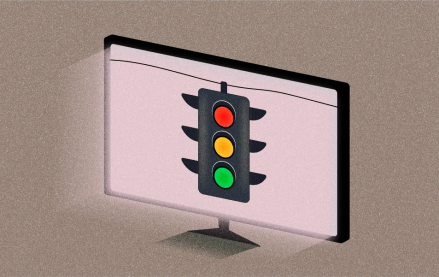 This is the fifth article in a 12-part series, “Solving the Web’s Brand Challenge.” The series is made possible through the sponsorship of Vizu, an online ad technology company whose solutions allow advertisers and publishers to measure and optimize brand lift in real time.
This is the fifth article in a 12-part series, “Solving the Web’s Brand Challenge.” The series is made possible through the sponsorship of Vizu, an online ad technology company whose solutions allow advertisers and publishers to measure and optimize brand lift in real time.There’s a favorite graph from over the years, even before Terry Kawaja’s slide, that’s a favorite of those lobbying on behalf of the Web. It’s the one below, which shows the amount of time spent online versus the budgets allocated there.
It was used most recently during famed Internet analyst Mary Meeker’s annual data dump on the state of digital media. It’s telling that she’s still returning to this oldie but goodie. According to Meeker the time spent comparison now justifies a $20 billion opportunity in mobile advertising. The problem with it is it isn’t true. Well, it’s true that there’s a gulf between budgets and time, but that’s irrelevant — at least to the people who control the spending.

The reason is simple, according to Rob Norman, CEO of GroupM: the chart doesn’t tell you anything about what people are doing in digital media. How much of that time is spent with email or online banking or any number of activities that have nothing to do with consuming content in an environment receptive to advertising. Translation: online time spent can go through the roof, but the budgets won’t follow unless that’s time spent with real media that has real brand advertising opportunities.
“Her number overstates almost certainly by a substantial margin the amount of time spent online with content consumption,” Norman said.
The chart is also indicative of the different ways of viewing media when it comes to Madison Avenue and Silicon Valley. For the latter, the “mega trend” is simple. People spend more time with a medium, be it the Web or mobile, the dollars follow. That’s why there is a frequent encouragement of venture capitalists that porfolio companies not waste much time early on developing their ad revenue model in favor of focusing on users above all else. It fits with the Valley’s engineering ethos — and works quite well in many cases. The problem comes that many of these businesses dutifully build up their user bases “to scale,” only to find that they can’t “turn on the revenue faucet” with advertising. To be more precise, with brand advertising.
“I don’t think this gap closes completely because the Internet is never going to be from a paid advertising standpoint the brand building medium TV used to be,” said Bryan Wiener, CEO of 360i.
More in Media

What publishers are wishing for this holiday season: End AI scraping and determine AI-powered audience value
Publishers want a fair, structured, regulated AI environment and they also want to define what the next decade of audience metrics looks like.

Media giant Essence launches a marketplace for Black women-led brands
Essence has launched WeLoveUs.shop, a new online marketplace dedicated to Black women-led brands.

In Graphic Detail: The state of AI referral traffic in 2025
The stats reveal a new audience pipeline forming outside of traditional search and social platforms.





